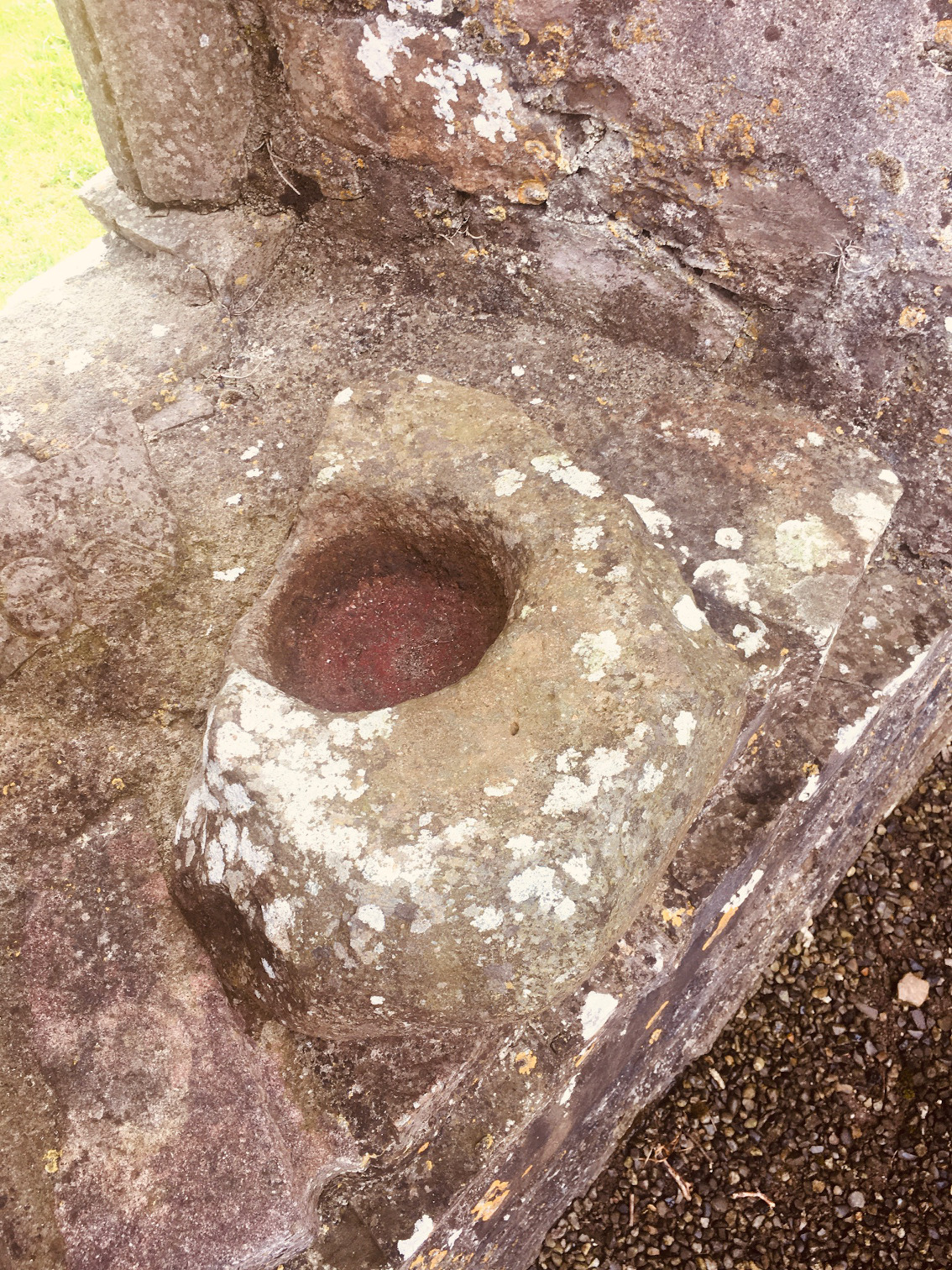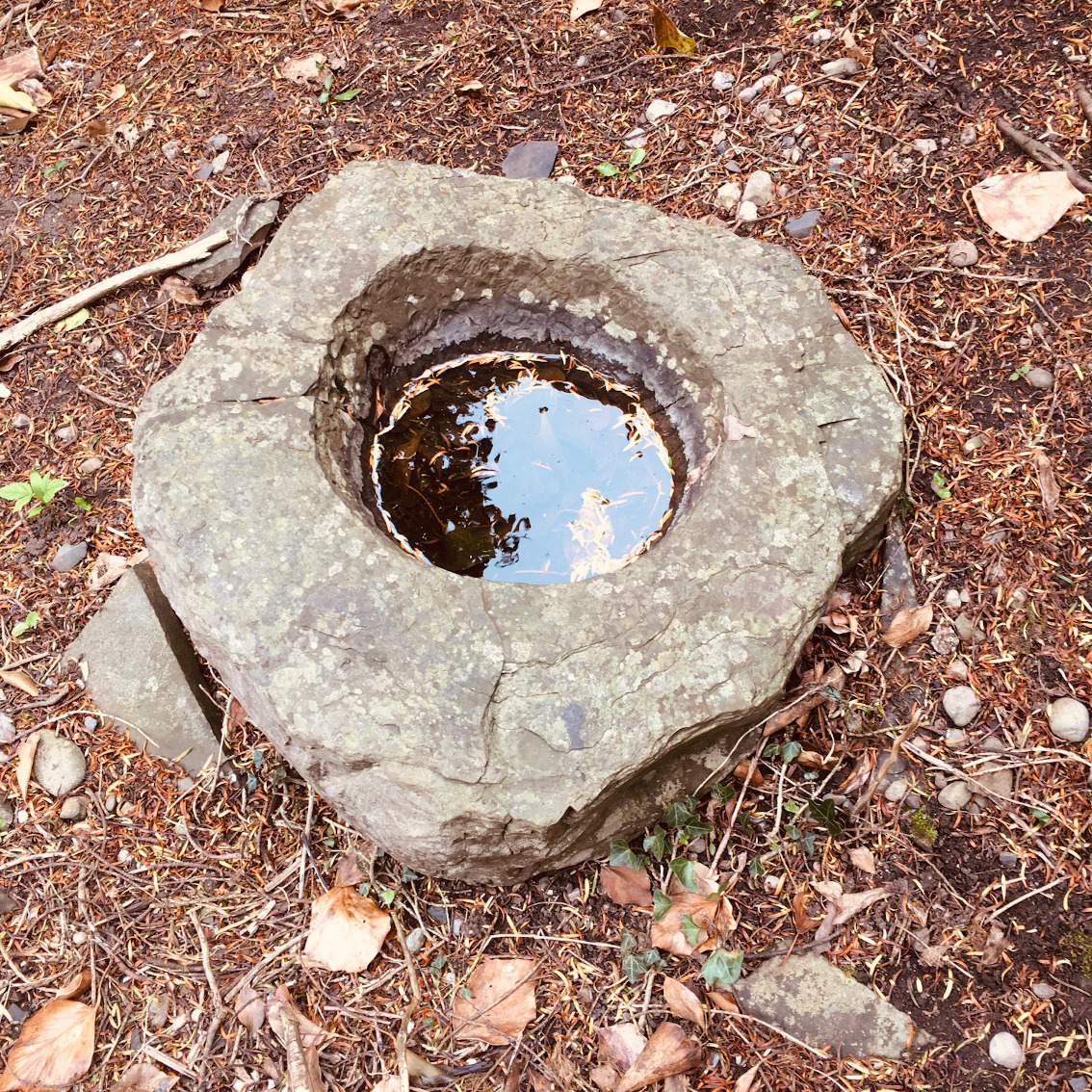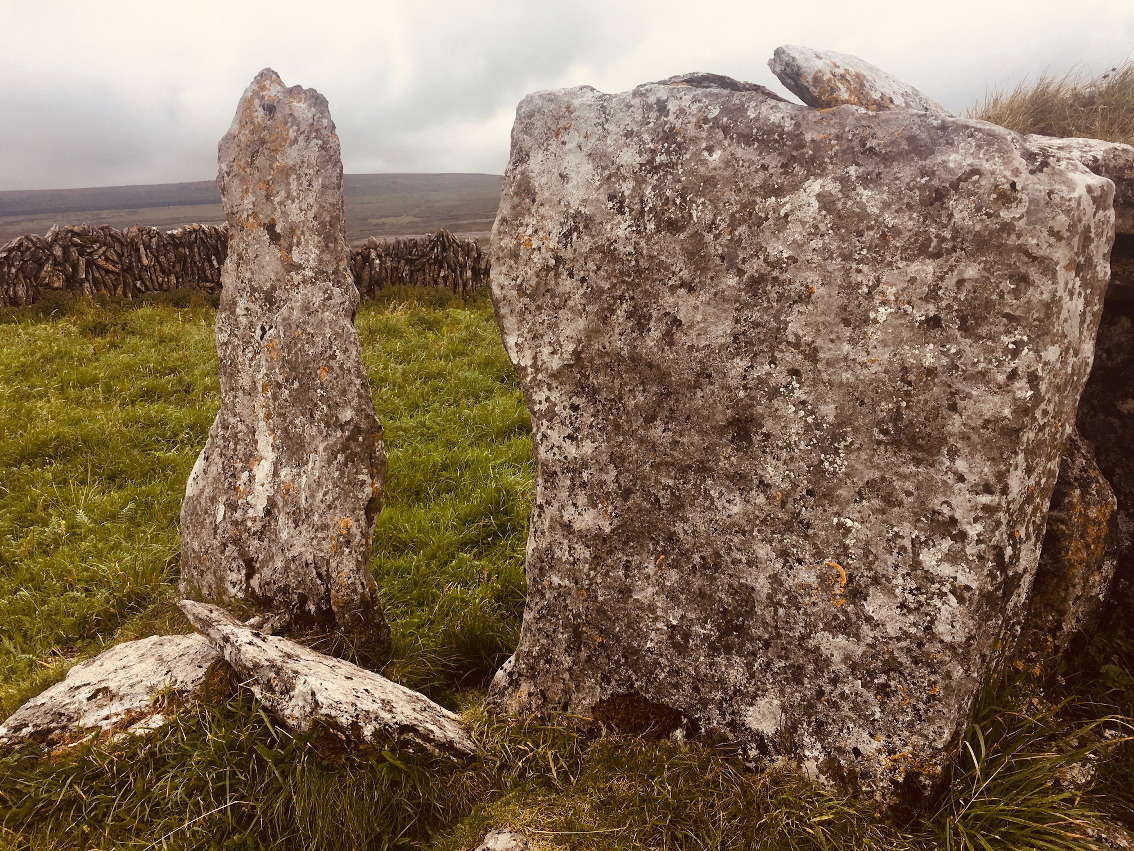I’ve been to Calliagh Berra’s house and lake 5 times, I think, and never written about it before. It’s well covered elsewhere and I haven’t felt the need. Experiences today, and newspaper reports, have given me second thoughts, so here goes.
The Ring of Gullion caldera itself would be impressive and worth a visit even without having one of the highest passage graves in Ireland, plus the lake, plus the second cairn. Then there’s Ballykeel dolmen to its west. So it’s a bit of a draw really, and not just for stone heads. Slieve Gullion forest park is a major attraction, with playgrounds, a café, various trails and easy access. Out of season, however, the crowds thin out, and there was no-one around on the snowy, January day I visited in 2016. Not today alas.
The car-park on the western shoulder that Gladman mentions below is still there. I’ve used it on all the occasions I’ve visited. It’s on close to the 350 metre contour, thus leaving you about a 226 metre climb. You could start from the car-park at the forest park centre, about a four kilometre walk below at the 120 metre contour, but I’ve always had the car and never felt the need.
The ascent to the summit and the cairn is quite strenuous but is now along a stone and gravel track. Access has been opened up and at many of the steepest parts the track turn into stone stairs. Work on this is ongoing and they’ve even gone as far as creating a track across the boggy top of the mountain, over to the lake and the second tomb.
All of this positive work does have its downside however. The erosion around the tomb is increasing. In fact, all of the top of the mountain is suffering. Who am I to complain about this? I get out as often as I can and how can we enthusiasts separate ourselves from the general mass of the populace seeking the benefits of the great outdoors?
And what of the tomb itself? It’s not the ultimate destination of a lot who come here. It seems to me to be an afterthought to most, a bunch of rocks without too much meaning other than vague notions of times past. Which is maybe its saving grace – most don’t bother too much with it, taking the odd selfie, clambering onto it and into it and leaving not long after. And then there’s the cohort that stick around a bit longer, maybe have a few beers and a few spliffs, who knows, maybe light a fire and fuck around a bit, carving names or initials into the rocks in the chamber, generally getting shitfaced and not giving too many fucks about anything. Been there, done that.
It’s been on my mind a bit, this general disregard for, and the popularising of, these places – and not just because it’s in the papers. I’ve been to some sites this year that have been trashed and I have felt caught between two stools. On the one hand I’m an enthusiast that photographs these places and put the results on an open website, partly guilty of the very popularising that I sneer at. And on the other, when I see these places restricted, like the cold houses of Knowth and Newgrange, I bristle.
I love Calliagh Berra’s house, even with its fake ass roof. The thunderously clunky construction of the chamber, the inexpert basin stones, the lintel over the passage entrance, the passage itself with its massive horizontal ‘orthostats’ and the quite massive cairn, all together make this tomb unique in passage grave-dom. We sheltered from the mini-storm back that day in 2016, in the mother’s womb, and were grateful. But this may be a luxury in the future. The general disregard of, even the vandalism and trashing of these places may end in them being closed to everyone. And in the end, who could argue with that?











































